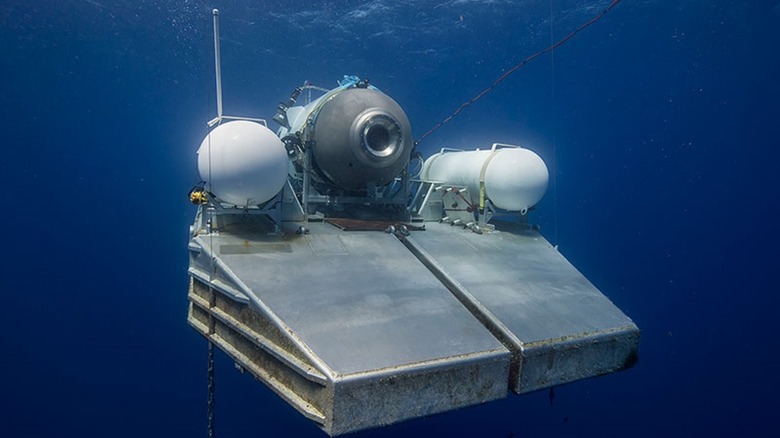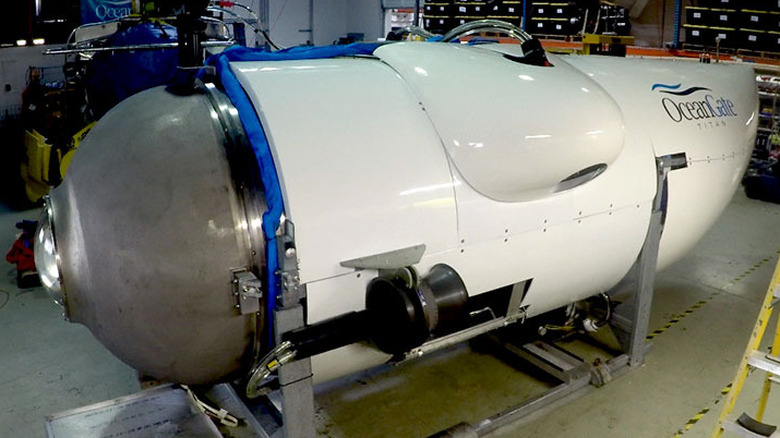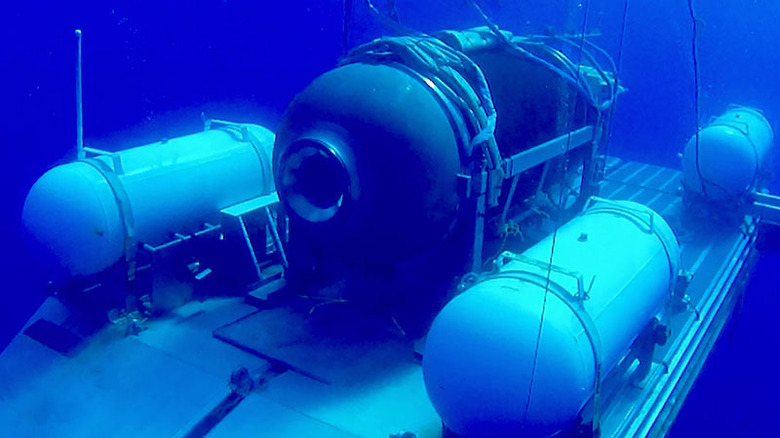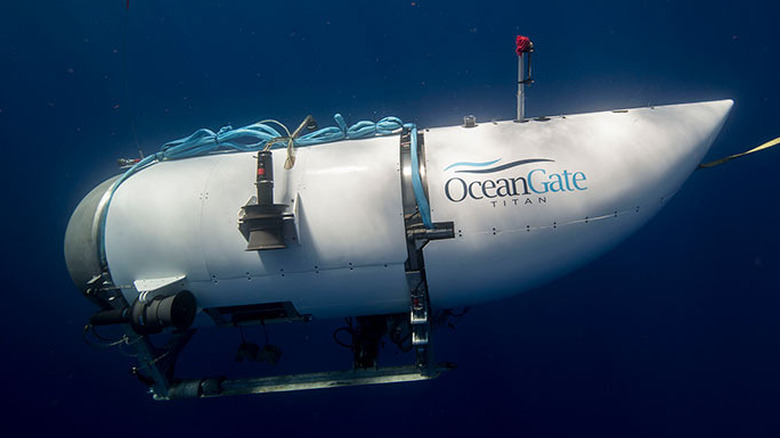Why The Titan Sub Was Doomed To Fail
The sudden implosion of OceanGate's Titan submersible was a tragedy, as five lives were nearly instantaneously lost — almost incomprehensible given the immense pressure generated by the ocean at extreme depths. However, the Titan submersible was not the victim of sabotage, rough seas, enemy submarines, underwater obstacles, or any other outside force you can think of. The Titan's failure was internal.
It was not built to a high-enough specification to survive the extreme depths it was advertised to operate within, and the owner and builder refused to subject it to any proper certification. As unsatisfactory of an answer it is, sheer hubris wrecked the Titan likely before it even hit the waves. In a cruel twist of fate, the Titan itself was made to visit the wreck of the RMS Titanic — a ship also sunk by the arrogance of its owners and refusal to operate within established safety guidelines.
Anyone who has worked in construction or within the trades can tell you that a lot of safety rules can be a hassle to deal with. Wearing all the required PPE (personal protective equipment) while on the jobsite can be a pain. Your hard hat is uncomfortable and sweaty, your safety glasses fog up, and your hi-vis vest gets in the way when you're just trying to get the job done well and go home. However, those safety precautions exist for a reason, and that gear keeps you alive.
Sheer hubris
This concept expands, to a massive degree, when deep sea diving — the world where OceanGate operated. As one would expect, there are numerous regulatory bodies to ensure that submersibles don't implode several miles under the waves. From seemingly the beginning, OceanGate and its CEO Stockton Rush had an adverse attitude towards safety.
On the Unsung Science podcast by CBS News, Rush said: "You know, at some point, safety just is pure waste. I mean, if you just want to be safe, don't get out of bed. Don't get in your car. Don't do anything. At some point, you're going to take some risk, and it really is a risk/reward question. I think I can do this just as safely by breaking the rules."
There's a huge logical flaw in Rush's thinking. Everything he mentions — your car, your bed, etc. — are all regulated to be reasonably safe. Your car is inspected by the National Highway and Traffic Safety Administration, and your mattress is made of certain materials that prevent it from collapsing, catching fire, or irritating your skin. When Neil Armstrong, Buzz Aldrin, and Michael Collins set off on the Apollo 11 mission, they were violating some safety practices by exiting the Earth's atmosphere and landing on the Moon for the first time in human history.
That's not the case with Titan's mission of visiting the wreck of the Titanic, a feat that has been done multiple times by several different people — including "Titanic" director and deep-sea expert James Cameron, who said to ABC "I'm struck by the similarity of the Titanic disaster itself, where the captain was repeatedly warned about ice ahead of his ship and yet he steamed at full speed into an ice field."
Where was the regulation?
Prior to the demise of the Titan's crew, not a single death or major injury has befallen the occupants of deep-sea submersibles dating back decades to the bathyscaphe Trieste, the first manned submersible of its kind and the first vessel to reach near the bottom of the Mariana Trench in 1960.
Former Naval Reserve officer Robert Ballard first found the wreck of the RMS Titanic in 1985 using an unmanned submersible. James Cameron visited the Titanic aboard the MIR submersible while filming the movie. All such vessels were tested and regulated. OceanGate, on the other hand, even had passengers sign waivers explicitly stating that the craft hadn't been approved by any regulatory body and was strictly experimental.
In an interview with CBS, Rush claimed that big names like Boeing, NASA, and the University of Washington helped make the Titan submersible possible. According to statements provided to Insider, neither Boeing nor the University of Washington had anything to do with Titan.
The University of Washington helped with designing a different OceanGate submersible — Cyclops 1, which was a steel hulled vessel — but not the carbon fiber and titanium Titan. News outlets, including SlashGear, have pointed out the hacked together components of the craft, including a game controller to pilot, RV lights, and security cameras for vision, but those are mere symptoms of a larger problem regarding the vessel's construction.
Untested materials
The vessel was constructed primarily of carbon fiber and titanium, two incredibly strong materials. Carbon fiber is used by supercars and racecars, as it's very light, flexible, and strong. Titanium is used in everything from eyeglass frames to aircraft, as it has a strength many times greater than steel. That all sounds well and good if you want to build something light and strong. However, the issue is that this submersible used carbon fiber for the elongated hull and titanium for the end caps — a design that hasn't been adequately tested to determine how well it holds up after being repeatedly subjected to deep-sea pressure.
Both the Trieste and MIR were made of thick steel, as are just about every submarine. In fact, retired Navy submarine commander Captain David Marquet told NBC News that steel is a "tried and true" material when it comes to these vehicles, and that "we understand how it reacts in these situations very clearly."
It's one thing to build an experimental vessel using new and unapproved materials to dive into the deepest unexplored parts of the ocean. That's how science evolves and changes over time; those materials are typically tested and approved months or years prior. It's another thing entirely to make a business out of experimental vessels and use non-scientist passengers as guinea pigs. The wreck of the Titanic, as alluring and mysterious as it is, has been visited dozens of times by scientists and explorers who know what the trip entails — as well as what it requires.
A catastrophic implosion at a depth of over 12,000 feet due to an outside pressure exceeding 6,000 pounds per square inch of pressure was the physical cause of the death of Titan's crew, and the total hull-loss of the vessel. However, the expedition itself was doomed from the start.



